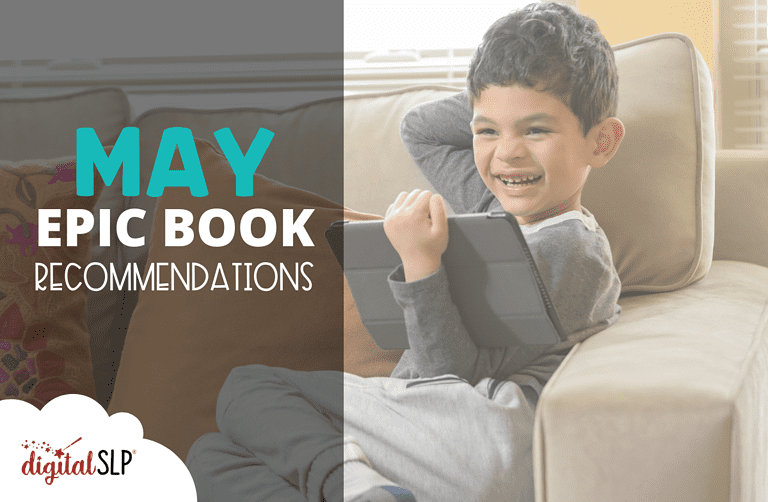Are you a creative person?
It seems like a simple question, but for many of us, it has a complex answer. Maybe creativity feels rare and elusive, something we can tap into when the conditions are right. Perhaps we want to be more creative, but we aren’t sure how to get there. Or we might value creativity but think of it as something reserved for those who make their living as “actual” artists.
That brings me to another question: is speech-language pathology a creative field? Many of us found our way to it through our love of science and research and evidence, and I understand how it could feel like a stretch to think of our reports and progress notes and session plans as . . . art. But is it possible? And if so, how could that change our daily experience at work?
Creativity Is Possible for All of Us
My answer to these questions is hopeful but measured. I believe we all have the capacity to be creative, and I believe speech-language pathology has the potential to be full of creativity. But there are obstacles that can block creativity, and over time, they cause us to feel lethargic and lifeless, both personally and professionally. We probably don’t want to feel like this, so what can we do?
I began researching ways to address our creativity conundrum, and I can’t wait to share the creativity tips I found. As always, I hope to keep this post practical and accessible, by exploring three obstacles that block our creativity as SLPs (and humans!), and three strategies for maximizing our creativity.
If you’re reading this and thinking, “I can’t be creative—I’m just trying to make it through each day,” I hear you, and I’m sending you compassion! I’ve been there so many times, and I’m sure I will be again. My hope is that pursuing creativity won’t feel like another to-do on our lists that are already too long; rather, that it will bring renewed purpose to our work, and help us experience more joy. Researchers have found connections between creative activities and improved mental health, so I believe it’s possible! But first, we need to figure out what’s keeping us from embracing our creativity.
Fear and Creativity
The one obstacle that stops creativity in its tracks every time is fear. In her exuberant book Big Magic: Creative Living Beyond Fear, creativity expert Elizabeth Gilbert writes that “everyone’s song of fear has exactly that same tedious lyric: ‘STOP, STOP, STOP, STOP!’”
Fear can keep us from going out of our comfort zones, using new interventions, being playful and authentic in our sessions, or trying new settings. Of course, on rare occasions, fear does keep us safe, but it mostly just keeps us small.
Gilbert goes on to assure us that even though fear is a barrier, creativity doesn’t require fearlessness—it requires courage. She explains that in her life, she has developed courage by using a counterintuitive strategy: she embraces fear! She welcomes it, makes space for it, and allows it to be in her life. But the courageous part is that she doesn’t give fear any decision-making power. This was such a helpful perspective shift for me—and I’m excited to see what happens when I experiment with it in my own life.
The Danger of Stigmatizing Mistakes
Another creativity-crusher is the stigmatization of mistakes, and Sir Ken Robinson’s iconic TED Talk (the most viewed of all time!) unpacks this idea in a powerful way. He notes that when it comes to very young children, “if they don’t know, they’ll have a go. They’re not frightened of being wrong.”
He then points out that, heart-breakingly, by adulthood, most people are terrified of making mistakes, and this prevents them from accessing their creativity. Robinson asserts that our education systems play a role in this transformation, and I think he’s right.
This is a challenging obstacle for SLPs to address, because many aspects of our work are shaped by federal laws and mistakes can feel catastrophic. But we are human, and mistakes will happen, despite our best efforts. The good news is that the vast majority of them can be fixed!
I’ll never forget when I made an error as a new SLP and called my supervisor in a panic, fully expecting to be fired. I was stunned when she said “This happens to everyone at some point” and calmly explained the steps I should take to address the situation. I’m not advocating for recklessness, and I’m not saying that mistakes are the same thing as creativity, but as Robinson reminds us, “If you’re not prepared to be wrong, you’ll never come up with anything original.”
Ultimately, it can be freeing to embrace our mistakes—especially when those mistakes come as a result of trying new things. In doing so, we empower not only ourselves, but also our students. And maybe we can play a role in helping them finish school with their creativity intact, because in Robinson’s words, “We don’t grow into creativity, we grow out of it.”
Our Own Assumptions About Creativity
The third obstacle to creativity is formed by our own assumptions about what it means to live a creative life and do creative work. It’s kind of like that famous Henry Ford quote: “Whether you think you can, or think you can’t, you’re right.” If we see our work as dry and regimented, with no space for a little spark, that’s probably how we’ll experience it. (And I’m not judging this perception! We all feel like this sometimes.) But if we move towards seeing our life and work as one big art project, our creativity can flourish. In fact, legendary journalist Bill Moyers defines creativity as “piercing the mundane to find the marvelous.”
If you’re thinking that this shift sounds amazing in theory but nearly impossible in practice, I’m with you! So let’s talk about concrete strategies we can use to bring more creativity into our lives, especially in our work as SLPs.
Reframe Routines as Art
This first strategy comes from writer Bill Apablasa, whose work focuses on living well in the second half of life. He suggests choosing a few daily routines and figuring out how to turn them into “art.” This doesn’t have to involve creating visual art at all (but it could!); it’s more about finding ways to infuse joy, energy, and delight into something you’d be doing anyway.
I think this could be especially powerful with routines that we dread. So for example, if you work with a group of students in the early afternoon, and they always want to talk about lunchtime drama, and it’s tough to get started with your planned activity, is there a way to turn that into art? Could the session begin with each student doing a 3-second dance move to show how they’re feeling that day? Could you start the session by having the students take deep breaths while you read them a few lines of poetry? Could you charge the students with looking for examples of kindness at lunch and then reporting at the beginning of each session?
Change won’t happen overnight, but looking at our routines and asking “How could I turn this into art?” is a useful starting place.
Using Constraints to Foster Creativity
The next strategy for increasing creativity also uses something that we have plenty of in our work lives: constraints! If you want to flex your creativity muscles, try identifying (or instituting) a specific constraint and working within it.
Using themes is a great way to do this—just choose a theme (farm, jungle, beach, etc.) and challenge yourself to connect every activity to that theme for a day, a week, or longer! Or you could zoom in even further and connect all your sessions to one book or one game. You could also use a time constraint, e.g., planning all of the following week’s sessions in one hour on a Friday afternoon.
I love this strategy because it helps us build our creative confidence within the safety of self-imposed constraints, and then carry that confidence into the constraints that are outside our control. There are a few caveats, though. This strategy probably isn’t ideal for clinical fellows or new SLPs—those first few years are tough enough without adding new constraints into the mix. It also might not be the best strategy to try when you’re feeling extra overwhelmed. In addition, I want to acknowledge that many SLPs contend with unreasonable constraints every day, and ongoing advocacy is needed to make our workloads more manageable.
Micro-strategies for Tough Days
The final strategy is actually a collection of mini-strategies to try when you feel stressed and stuck and need to shake things up and get your creativity flowing again:
- Move! Whether you put on a song and dance, do some jumping jacks, or borrow an OT’s trampoline and let loose, movement is a reliable creativity booster.
- Connect with nature! Ideally, this could be a quick walk outdoors or looking out a window, but researchers have found that even seeing photos of nature can support creativity—so fire up that Google image search between sessions!
- Brainstorm! This strategy is especially helpful for working with complex problems that seem to have no solutions. Just grab some Post-its and markers (or whatever you have on hand), set a timer, and write down every possible idea you can think of, even (especially!) the ones that feel ridiculous. As a bonus, some research indicates that writing by hand enhances creativity and focus.
Creativity is Essential
Going back to the questions I posed at the beginning of this post, I have to admit that I haven’t always believed that we are all creative in our own unique and magnificent ways. Not that long ago, I never could have imagined that I would be writing and podcasting and developing SLP materials to share with others.
But I received incredibly generous encouragement from the people in my life, and slowly, their belief in me became my belief in myself. Now I want to pass that belief onto you, with the hope that creativity will not just help us survive, it will allow us to surprise ourselves in ways we never dreamed possible.
If you try any of the ideas from this post, please reach out! I would love to hear how it goes.
References and Resources:
3 science-based strategies to increase your creativity
Big Magic: Creative Living Beyond Fear
Do Schools Kill Creativity?
Everyday bodily movement is associated with creativity
Everyday creative activity as a path to flourishing
How to Use Themes in Speech Therapy
In a Rut? Eight Actions that Will Help Improve Your Creative Thinking Skills
The influence of natural environments on creativity
Writing by hand may increase brain connectivity more than typing













Recent Comments